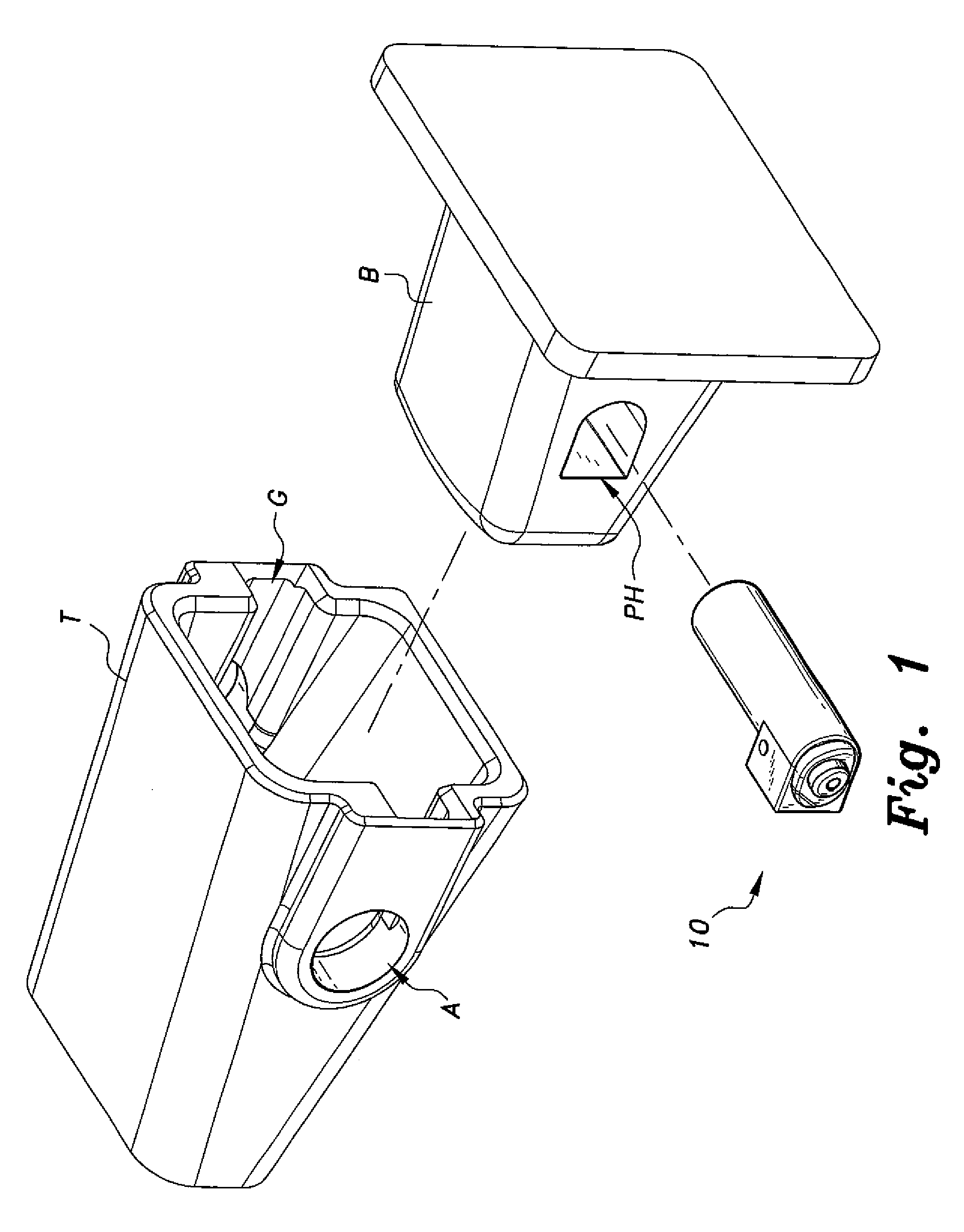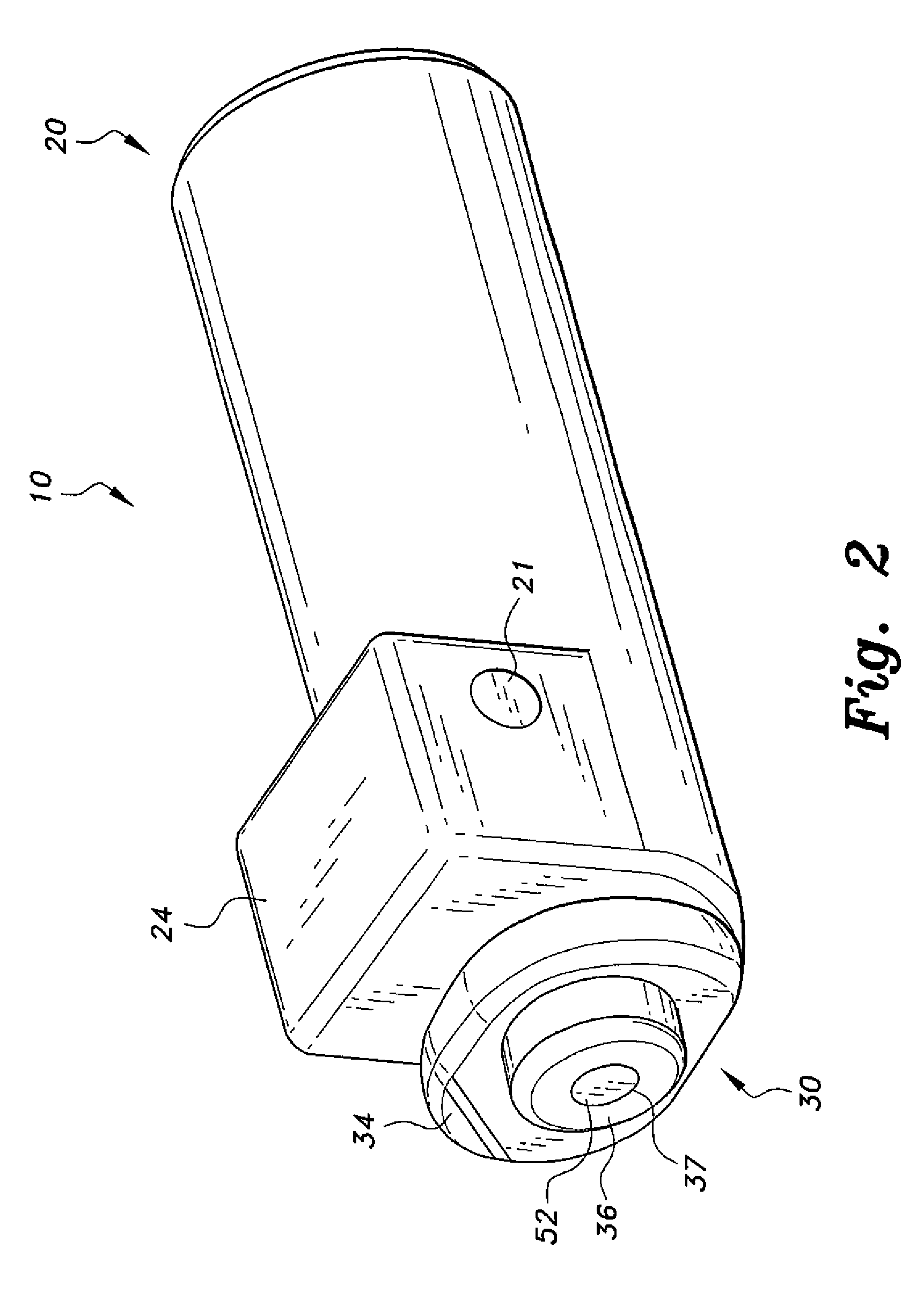Locking pin assembly
a technology of locking pins and assembly parts, which is applied in the direction of construction, key-type connections, fastening means, etc., can solve the problems of high degree of wear in the working environment of excavators and excavators, installation of teeth, and potential accidental injuries
- Summary
- Abstract
- Description
- Claims
- Application Information
AI Technical Summary
Benefits of technology
Problems solved by technology
Method used
Image
Examples
Embodiment Construction
[0021]The locking pin assembly, a first embodiment of which is generally referred to by the reference number 10 in the drawings, provides safe and easy locking and unlocking features that requires minimal physical effort. The pin assembly 10, shown in FIGS. 1-4, includes a pin housing 20 (also referred to as a pin body or cartridge) and a pin mechanism or component 30 selectively inserted into the pin housing 20. The pin housing 20 is an elongate, substantially hollow cylindrical housing having a partially squared section 24 attached to the cylinder at one end. This partially squared section 24 results in a U-shaped or horseshoe shaped periphery at one end of the housing 20. The pin housing 20 is configured for insertion into a correspondingly shaped bore PH formed in the tooth base B. The pin housing 20 protects the pin mechanism 30 and prevents the housing 20 from rotating relative to the tooth base B. In order to prevent such rotation, it is preferable that the bore PH and the pi...
PUM
 Login to View More
Login to View More Abstract
Description
Claims
Application Information
 Login to View More
Login to View More - R&D
- Intellectual Property
- Life Sciences
- Materials
- Tech Scout
- Unparalleled Data Quality
- Higher Quality Content
- 60% Fewer Hallucinations
Browse by: Latest US Patents, China's latest patents, Technical Efficacy Thesaurus, Application Domain, Technology Topic, Popular Technical Reports.
© 2025 PatSnap. All rights reserved.Legal|Privacy policy|Modern Slavery Act Transparency Statement|Sitemap|About US| Contact US: help@patsnap.com



